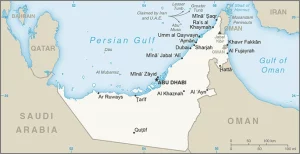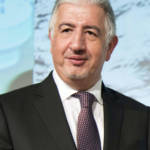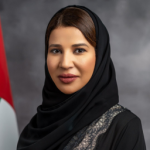Importing from United Arab Emirates


UAE Country Profile
Official Name (Local Language) Al Imarat al Arabiyah al Muttahidah
Capital Abu Dhabi
Population 5,927,482
Currency U.A.E. Dirham
GDP $375 billion
Languages Arabic
Telephone Dial In 971
UAE Exports Profile
Exports ($m USD) 298,651
Number of Export Products 4,260
Number of Export Partners 208

UAE Economic Statistics
Government Website | https://government.ae/en#/ |
| Sovereign Ratings | https://countryeconomy.com/ratings/united-arab-emirates |
| Central Bank | Central Bank of the United Arab Emirates |
| Currency USD Exchange Rate | 3.673 |
| Unemployment Rate | 3.6% |
| Population below poverty line | 19.5% |
| Inflation Rate | 3.4% |
| Prime Lending Rate | NA |
| GDP | $375 billion |
| GDP Pro Capita (PPP) | $6,700 |
| Currency Name | U.A.E. Dirham |
| Currency Code | AED |
| World Bank Classification | High Income |
| Competitive Industrial Performance | 16/138 |
| Corruption Perceptions Index | 21/180 |
| Ease of Doing Business | 11/190 |
| Enabling Trade Index | 23/136 |
Access trade, receivables and supply chain finance
We assist companies to access trade and receivables finance through our relationships with 270+ banks, funds and alternative finance houses.
Get StartedImporting from United Arab Emirates
The United Arab Emirates’ most important exports are oil, diamonds and precious metals, and machinery. The country is one of the world’s largest oil exporters, with an economy that is heavily reliant on petroleum and natural gas revenues. Its diversified buyer network makes it more resilient to shocks than many fellow oil exporters; this has enabled its economy to survive both the Covid-19 pandemic and the Ukraine war relatively unscathed.
The country’s strategic position near the Strait of Hormuz and facing the Persian Gulf makes it a crucial player in the region’s trade. The government is aware of this and promotes trade, among other things by actively lobbying against foreign protectionist tariffs that would negatively affect Emirati exports.
The UAE is a federation of seven emirates, the two most famous being Abu Dhabi and Dubai. It is ruled by the president, elected by the seven hereditary sheikhs, and a semi-elected Federal National Council. The country is overwhelmingly Muslim but tolerant of other religions and ethnicities, and has been described as one of the most liberal of the Gulf countries. Protests and unrest are almost nonexistent, but tensions with neighbours Qatar, Iran, and Yemen have led to a rise in defence spending and may cause instability in the future. However, for now the UAE remains a crucial trade hub and haven of stability in the Middle East, and an attractive trade and investment partner.
Importing from United Arab Emirates: What is trade finance?
United Arab Emirates (UAE) is a federation of the seven emirates of Abu Dhabi, Ajman, Al Fujairah, Dubai, Ras al Khaymah, Sharjah, and Umm al Qaywayn. UAE is heavily reliant on its export industry, being the sixth largest petroleum exporter in the world. Petroleum export revenues are valued at around $120 billion USD a year, out of a total of around $200 billion USD total export revenue.
UAE exports globally, its top export destinations are Japan, India, South Korea and Thailand. As well as crude petroleum, UAE exports gold, petroleum gas and raw aluminum. Interestingly, UAE is a big user of natural gas, and as well as sharing international gas pipelines, it’s a big importer and exporter of liquefied natural gas (LNG).
Chart Showing GDP Growth Compared to rest of world
GDP Composition for United Arab Emirates
Agriculture
0.7%
Dates, vegetables, watermelons; poultry, eggs, dairy products; fish
Industry
44.6%
Petroleum and petrochemicals; fishing, aluminum, cement, fertilizers, commercial ship repair, construction materials, handicrafts, textiles
Services
54.7%
Map
Top 5 Exports Partners
| Country | Trade | % Partner Share |
| Unspecified | 153,339 | 51.34 |
| Other Asia, nes | 41,351 | 13.85 |
| India | 11,255 | 3.77 |
| Iran, Islamic Rep. | 8,810 | 2.95 |
| Switzerland | 7,425 | 2.49 |
Top 5 Exports Products
| Export Product | Number |
| Petroleum oils and oils obtained from bituminou | 11% |
| Gold in unwrought forms non-monetary | 5.5% |
| Art. of jewellery and pts thereof of/o prec mtl | 4.3% |
| Petroleum oils, etc, (excl. crude); preparation | 4.0% |
| Diamonds non-industrial unworked or simply sawn | 3.2% |
Local Authors
Local Partners
- All Topics
- UAE Trade Resources
- Export Finance & ECA Topics
- Local Conferences
























